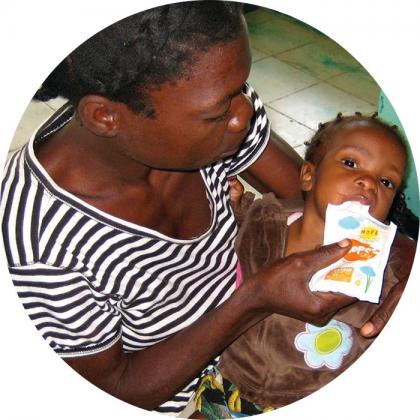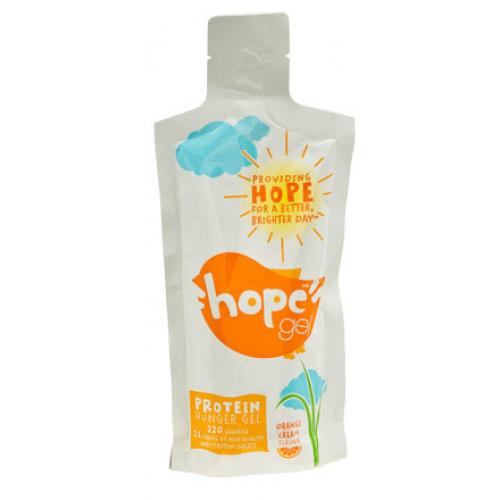Hope Found in a Lightweight Pouch

HopeGel, a nutrient and calorie-dense protein gel designed to aid children suffering from severe acute malnutrition. HopeGel has been distributed in Haiti – where malnutrition is the number one cause of death among children under five – through the work of a nonprofit, grassroots organization called The HopeGel Project.

According to Dr. Miller, “It’s hard to believe that just a two-hour flight away, there are children starving. The poverty is indescribable.” He notes that access to protein was especially scarce.
Schapiro and Feldman were familiar with formulating and manufacturing protein supplements. Together, they had founded the company EB Performance, which offered a line of high-quality protein bars and drinks. At the time, they were beginning to investigate ready-to-eat protein gels. According to Feldman, “When we saw the article, a light bulb went off. We thought, can we use this gel technology in Haiti?”
Dr. Miller helped to obtain funding for initial production of HopeGel through the Boca Raton Regional Hospital Foundation. Meanwhile, working with food scientists and nutritionists, Schapiro and Feldman developed HopeGel: an orange-flavored gel dense with proteins, fats and amino acids. The product was easily digestible, required no refrigeration and was shelf-stable for up to one year. The orange-flavored miracle food packed a nutritional wallop of 220 calories, and would be easy for children to consume with no water or mixing involved.
The HopeGel Project then turned to Glenroy for flexible packaging. By packaging the product in a lightweight pouch, the product would be easier to transport. In addition, by utilizing a shaped squeezable pouch, children would be able to sip the protein gel directly from the pouch.
According to Ken Murtagh, Glenroy’s regional manager, “I was inspired by the heart of the HopeGel mission, but I knew the project wouldn’t succeed unless Glenroy’s packaging engineers used their expertise to construct a packaging material that would meet very stringent requirements. Our packaging engineers needed to fully understand the ingredients, expected lifecycle and distribution method of HopeGel, as well as the type of packaging equipment the packaging film would run on.”

To date, The HopeGel Project has delivered more than 50,000 pouches of HopeGel to Haiti. Shipments of the product are flown directly from an airport in South Florida to northern Haiti, where the HopeGel pouches are taken immediately to hospitalized children at Hospital Sacré Côeur, as well as children at a nearby orphanage. Young patients are usually supplemented with three pouches per day of the protein-packed gel until they achieve a normal weight.
“We see the malnourished children begin to think more clearly and become more active and playful after only a few weeks of nutritional supplementation with HopeGel,” says Sister Ann Crawley, director of the nutrition center at Hospital Sacré Côeur in Milot, Haiti.
“It has been an honor to provide packaging material for this life-saving product,” states Murtagh. “What these folks are doing is incredible, and it shows how packaging can go a long way in helping the world. We hope to see the HopeGel Project continue to prevent children from being lost to starvation.”
Buss adds, “It has been very gratifying to be able to play a small part in providing hope and much needed nutrition to the children of Haiti, and we look forward to helping the HopeGel Project expand to additional areas in need.”
The nonprofit HopeGel Project has no paid employees, and has been funded entirely through donations to the Boca Raton Regional Hospital Foundation in Boca Raton, Fla. All donations go directly toward manufacturing the product and flying it to Haiti.
“Unlike a traditional business, we are dependent on continued donations to make this product,” says Schapiro.
“Although there is plenty of work to do in Haiti, we would eventually like to expand to other areas of the world where we can make an impact as well,” adds Dr. Feldman.
Donations are currently needed to produce and distribute more HopeGel. To support the HopeGel Project through a donation or to read further details on the project, please visit www.hopegel.com. Each donor brings the HopeGel Project one step closer to producing the next shipment of HopeGel for children in need.
